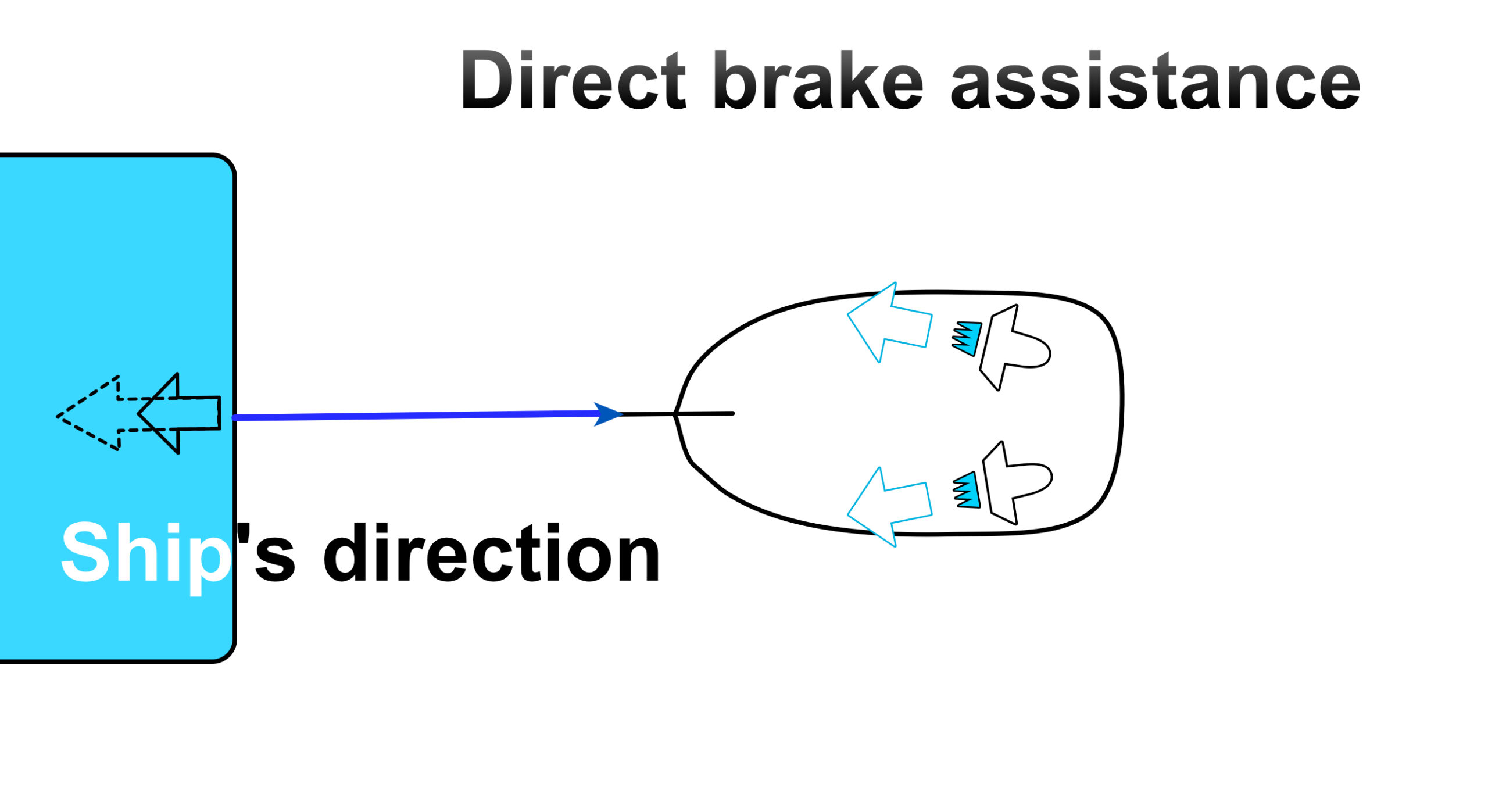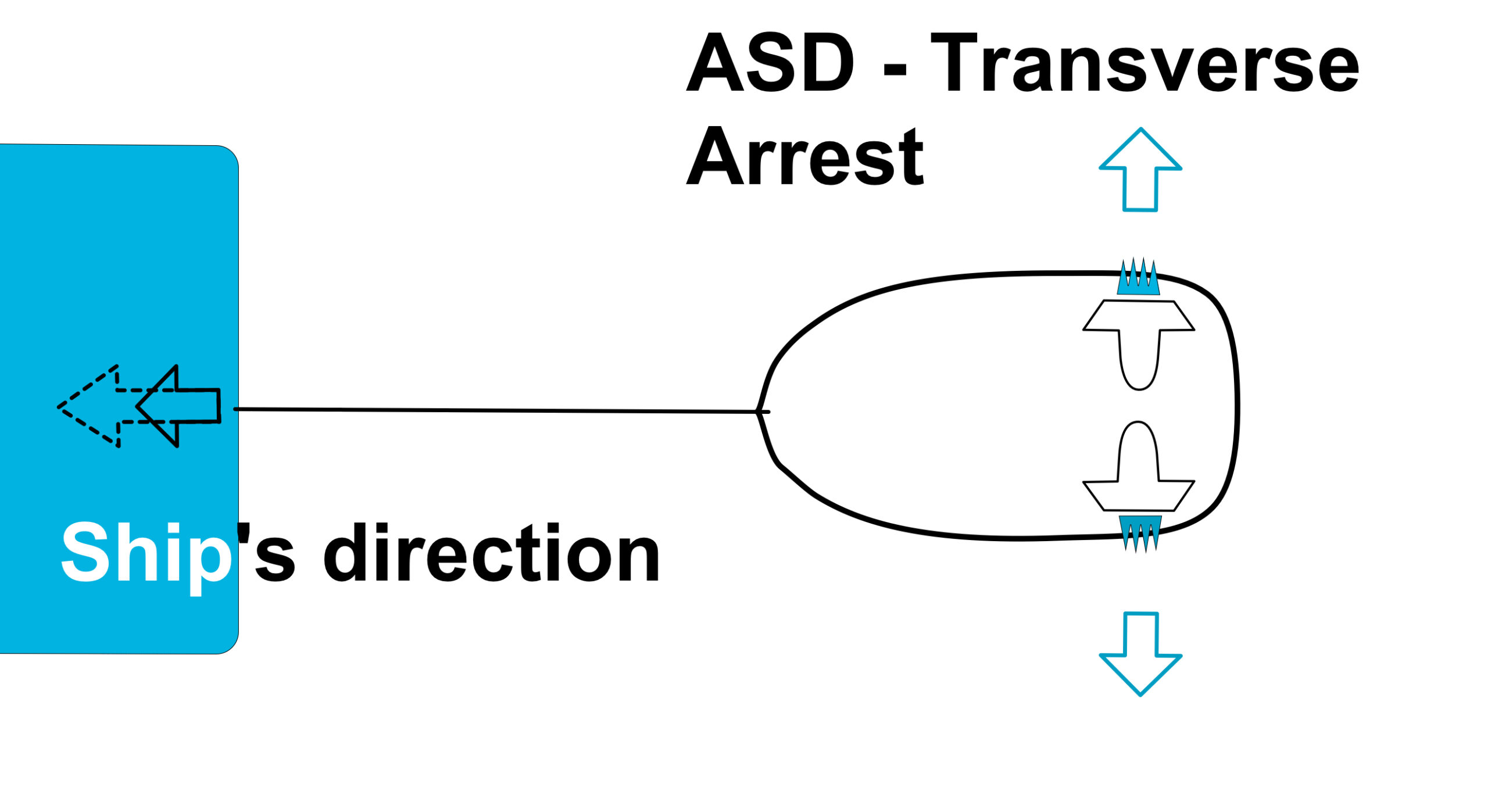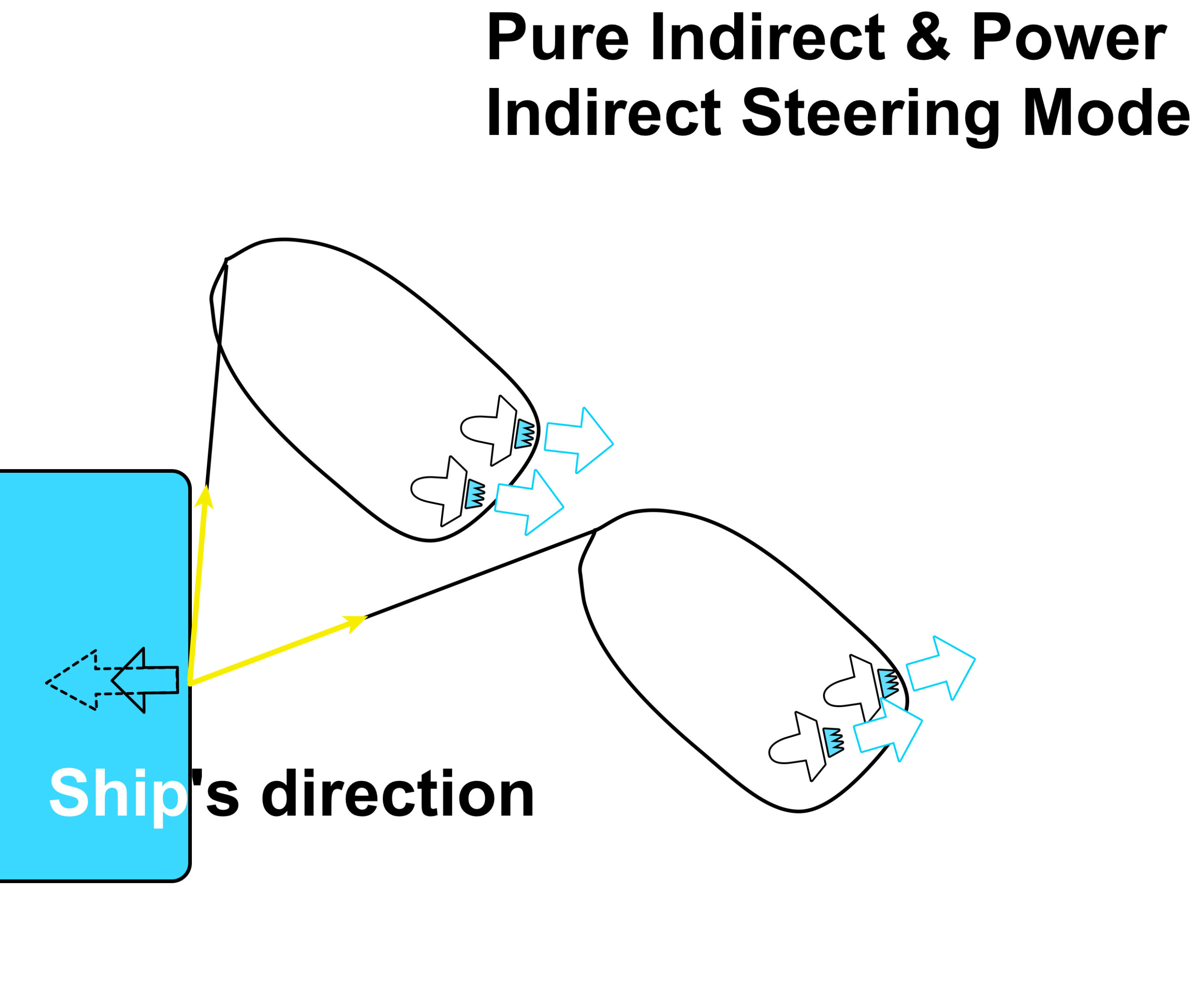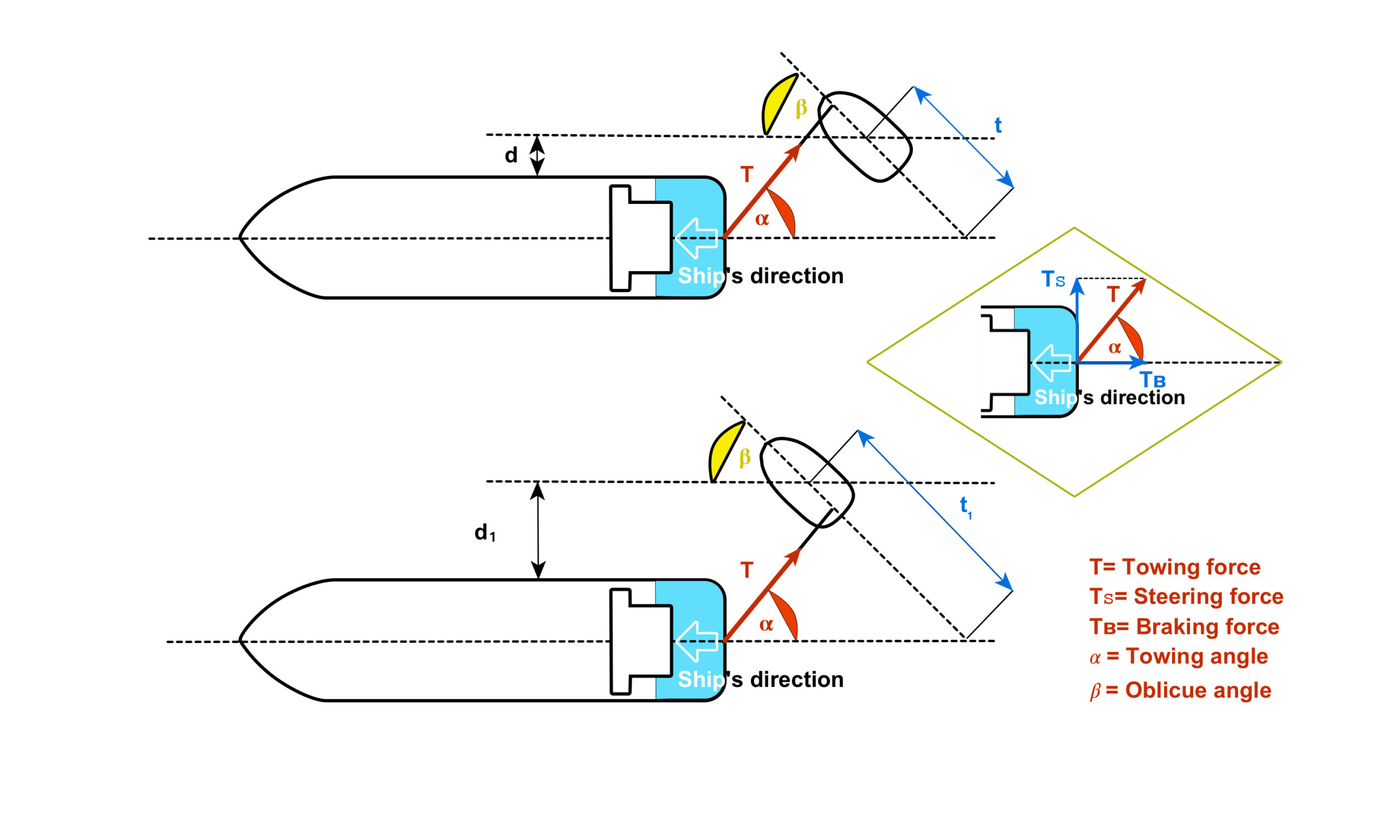Direct or Indirect Towing Method Copy
Now that we have framed the Bollard Pull, let’s go back a few lines to explain how a tugboat can work in Escort, how it can stop a ship’s headway or act as a rudder when it works tied aft, directly or indirectly.
We mentioned it in the previous chapter, but we want it to remain fixed and well understood. The choice of one or the other method mainly depends on the ship’s speed and the effect we want to achieve.
Within 6 knots, the Tug works directly using the propeller to develop its Bollard Pull, pulling in line and moving with the towline always in tension on its longitudinal axis.

The maximum pulling force is obtained with the thrusters at full power and in line with the longitudinal axis in “Reverse Arrest”.

Between 6 and 8 knots, the Tug is in a transition phase, and the best control over the ship mainly depends on the type of engine it is equipped with. For example, for an azimuth tug, the most effective way to stop the vessel is the “Transverse Arrest”, in which the thrusters pods are oriented 90° outwards at full power.

Beyond 8 knots, the hull’s hydrodynamic forces become predominant. The tugboat must use the Indirect Method to avoid overloading, using its skeg to generate additional load to brake or steer the stern. The brake action is achieved by making the tug line work at a variable angle of up to 45 degrees concerning the direction of the ship’s motion, with the Tug and its skeg at a certain oblique angle concerning the water flow. The oblique angle determines the resistance that the skeg opposes to the motion.
The Tug can exploit this frictional resistance by orienting the thrusters to maintain the desired oblique angle by simply braking the ship with only the force developed by the more significant section offered by the skeg.
The maximum brake force is obtained by positioning the skeg at 70 degrees concerning the water flow, while the full pull force leads at 50 degrees (Pure Indirect).

The Tug can also use the entire skeg surface, using the dynamic brake method or “Combination Indirect mode”, positioning itself outside the ship’s wake, with the skeg at 90 degrees and a towline pull angle up to 45 degrees. This manoeuvre develops good power and is particularly useful in countering an involuntary and out of control ship’s yawing while helping to slow her speed down.

In the range of 3-7 knots, to increase the speed of the ship’s turn, the Escort tug can switch from the position of “Pure Indirect Towing” to that of “Power Indirect Towing” – moving sideways at full power, out of the ship’s wake with the towline working up to 90 degrees and the Tug at about 70 degrees oblique to the water flow –
This manoeuvre can quickly provide pulling energy to bring the stern to the desired side.
The slower the vessel speed, the more effective the manoeuvre is, as the Tug can count on a greater thrust power.
The Indirect Method increases the conventional Tug’s Bollard pull up to 85%.

As the speed decreases, the Tug’s captain will change the method best suited to the situation: direct, more efficient at low speeds or indirect, faster and suitable for confined spaces.
The ideal length of the aft tug’s line keeps it away from the wake of the ship’s propeller. If too close to the ship’s stern, the Tug tends to yaw from side to side by applying load on the towline, which affects the ship’s steering. Experience shows that line of 90 – 100 meters in length is enough to eliminate this problem. A long line also allows you to switch from direct to indirect methods quickly.
However, in particular circumstances, such as canal navigation or berth approaching, where reactivity is essential, and speed must necessarily drop, the towline, to be effective, must be shortened. The ideal length for short work is given by the sum of the Tug’s length overall plus half the width of the escorted vessel.
It is advantageous to work with the stern Tug at its bow to turn in confined areas. Different types of tugs have specific characteristics that do not allow for generalization. However, we would like to focus on an aspect that is not always intuitive. For this purpose, we have prepared an image from which it is possible to evaluate the difference in time and space necessary for a tug in stern brake, which must move sideways, to contribute to the turning of the assisted ship.

We considered a hypothetical tug positioned at the same working angle tied to its bow or stern hook. We can graphically evaluate the parameters “t” and “d” (time and distance) in the two cases.
It should also be added that, in the first example, the transition from the pure brake position to the swinging position in direct mode is very rapid. In the second, the tugboat has to rotate by pivoting on the towline, losing additional time, and if the assisted ship has excessive speed, it should rotate while loosening the line to keep itself safe from girting.
